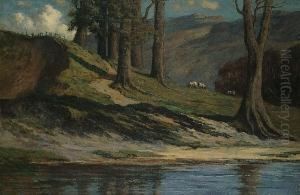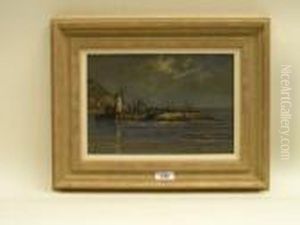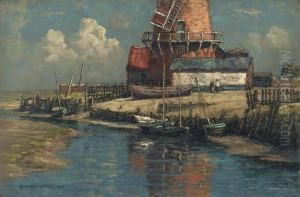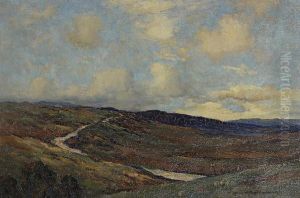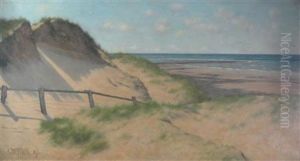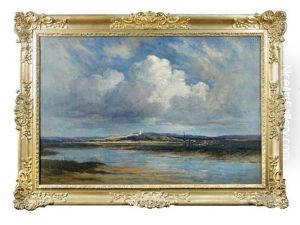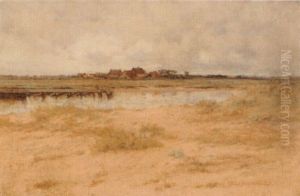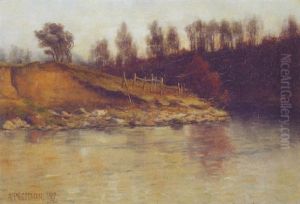Arnold Priestman Paintings
Arnold Priestman was a British artist known for his landscape paintings. Born in 1857, Priestman was part of a generation of British artists who were active during the late 19th and early 20th centuries, a period that saw significant changes in the art world with the emergence of movements like Impressionism and Post-Impressionism.
Priestman's early life and training are not widely documented, but it is known that he developed a keen interest in painting landscapes. He was particularly drawn to the rural countryside and coastal scenes of Britain, capturing the essence of these locales in his works. The artist's style was characterized by a subdued palette and a focus on the atmospheric effects of light and weather, which he conveyed through a traditional, realist approach.
During his career, Priestman exhibited at various institutions, including the Royal Academy of Arts in London, which was a significant achievement for artists of the time. The Royal Academy was a prestigious venue, and exhibiting there was a mark of recognition and respectability within the British art establishment.
Despite his success, Arnold Priestman did not gain the same level of fame as some of his contemporaries. Nevertheless, he was appreciated by art collectors and critics for his serene and contemplative landscapes that often evoked a sense of tranquility and timelessness.
Arnold Priestman’s career spanned a period of great innovation in art, but he remained largely faithful to his traditional style throughout his life. He continued to paint until his later years, and his artworks are now part of several private collections and may be found in regional galleries in the UK.
Priestman passed away in 1941, leaving behind a legacy of landscape paintings that offer a glimpse into the British countryside of his time. While not a leading figure in art history, his contributions to the genre of landscape painting have ensured that his work is still appreciated by art enthusiasts and collectors.
